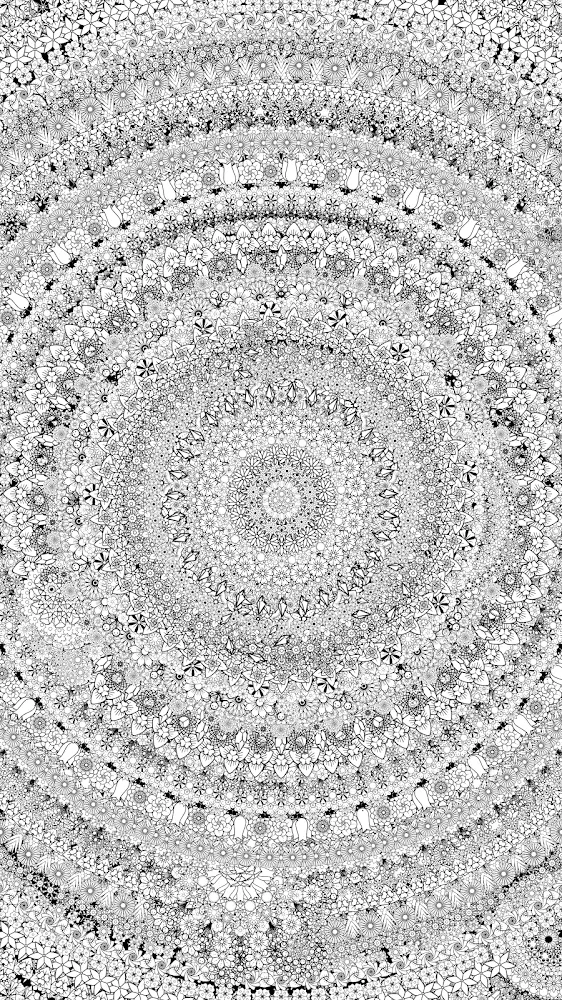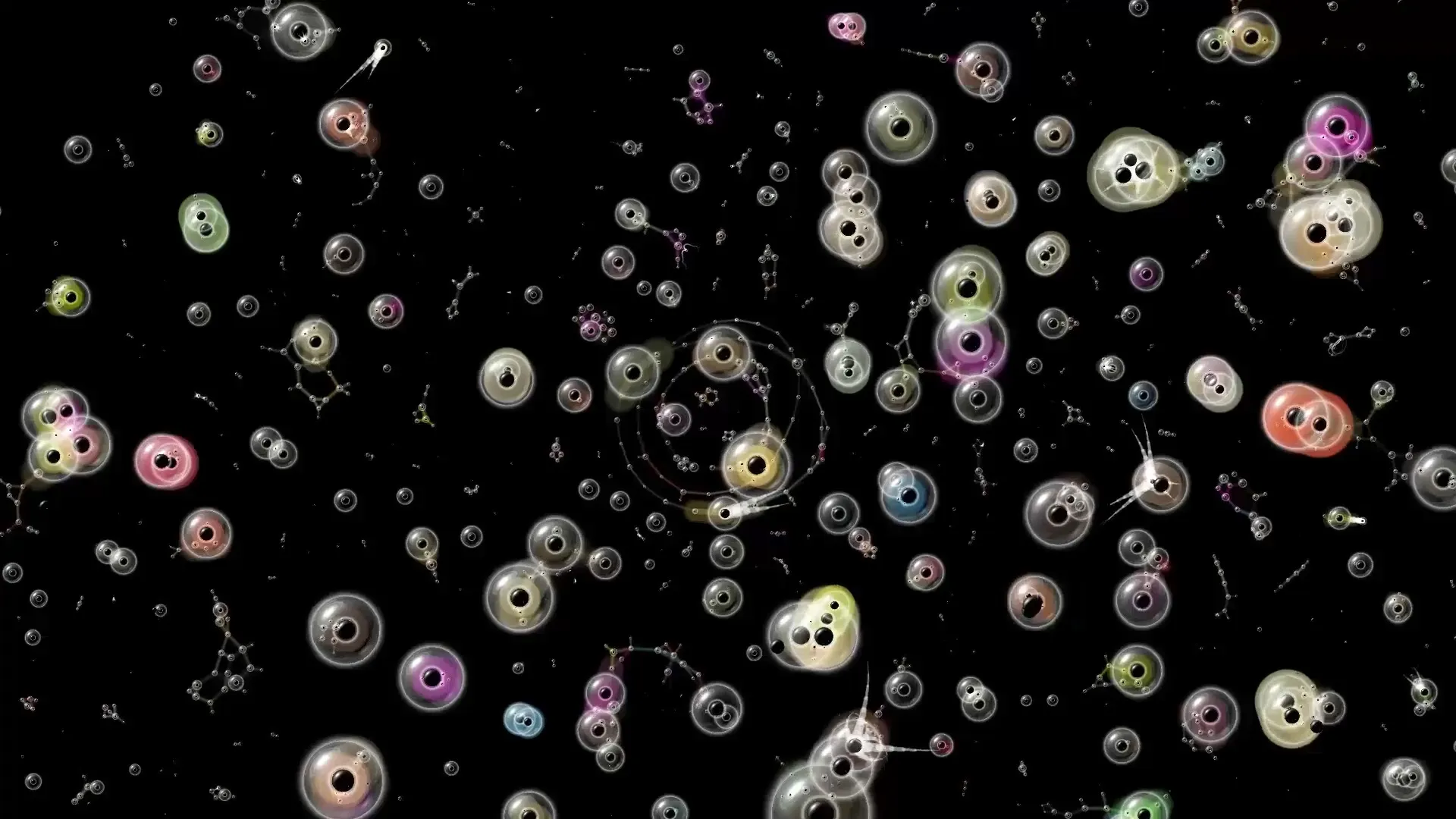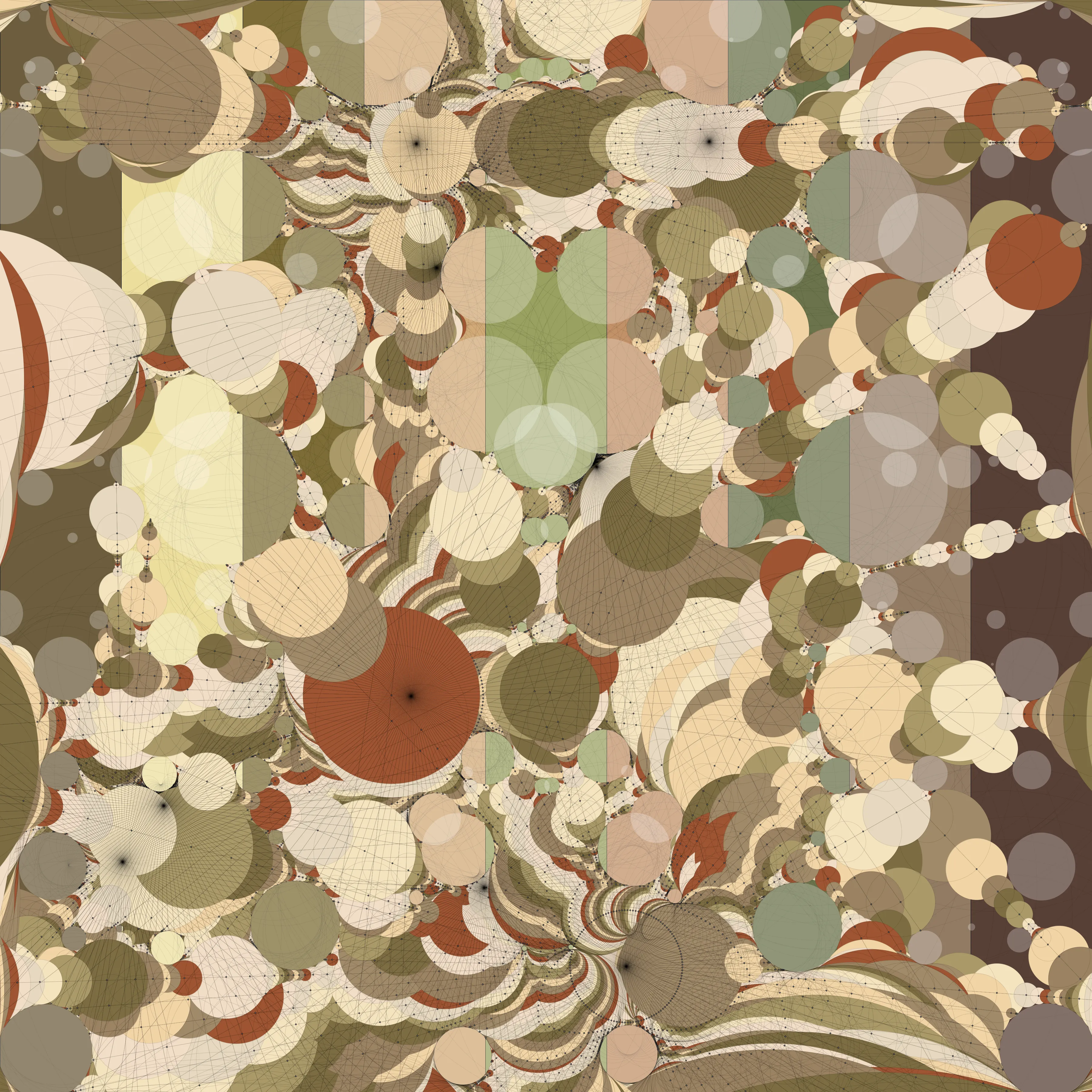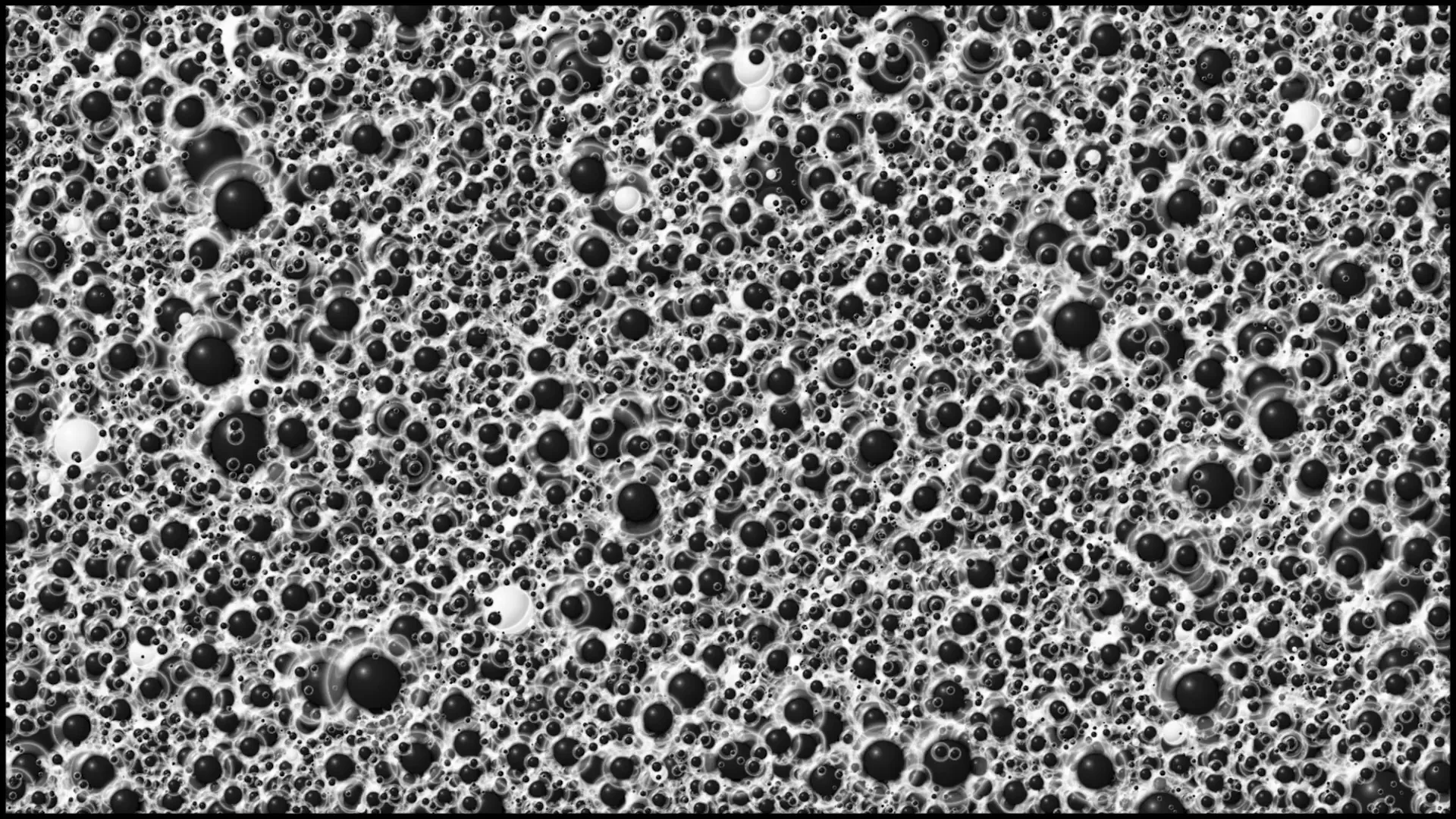Subscribe to get the latest on artists, exhibitions and more.
Jared S Tarbell Under Cosmic Influence: Channeling Art's Liquidity into the Moon's Orbit

On June 28, we will launch Ray Marching the Moon: Full & New, a series of generative artworks created by Jared S Tarbell and linked to the [aside] protocol. This series will have the following feature: all purchased NFTs will be locked at mint time and will be unlocked in batches of 5 during each subsequent full moon and new moon for one year’s time.
Written by the Distributed Gallery collective.
[aside] introduction
Before delving deeper into the specifics of this series, let's recall that [aside] is a protocol that enables the immobilisation of any NFT on the Ethereum blockchain, and conditions its release to external phenomena, whether natural (weather, earthquake, storm), astral (solar eruption, planetary transit), economic (inflation, deflation), financial (stock market), demographic, or social. Once locked, these NFTs remain non-transferable for a dedicated period of time or until a specific real-world event fetched by our Chainlink oracle happens, therefore restricting the tradability of the artwork by tying its commercial becoming to the outside world.

Celestial events on the blockchain
When we met Jared S Tarbell to introduce him to the possibilities of the [aside] protocol, his interest quickly turned to the idea of exploring planetary transit phenomena. We immediately agreed to embrace his desire to play with celestial events as obtaining prediction tables for planetary transits is straightforward due to the stable and perfectly predictable nature of the celestial orbits of large objects in the solar system, akin to clockwork.
My aim is to show the machine of the universe is not similar to a divine animated being, but similar to a clock. Johannes Kepler, 1605.
We thought of the [aside] protocol as a way of chaining the art world to its outside. The idea was to create an agnostic 'protocol' and bring together things that weren't meant to meet; as the poet likes to do with words, so too protocol does with data. From this perspective, working with celestial data seems more than coherent because it allows us to inject what is furthest from us into the mundane life of an artwork. To establish a kinship between the work and its universe so that the economic life of the artwork can be affected by the movements of celestial bodies, therefore materialising a regime of belonging from one to the other.
When it comes to retrieving data from the outside, the movement of the stars is the simplest option because everything can be recorded on-chain without the need for an API or any other kind of third party. Celestial events provide the most robust and reliable forecast data available, as they can be accurately calculated in advance.
Several experiments in this direction have already been conducted in the brief history of crypto art, as brilliantly demonstrated by Matt Kane with Gazers, which synchronizes the aesthetics of its works in accordance to the moon phases calendar. In his use of lunar calendars, Matt Kane has succeeded in turning the experience of the artwork itself into a moment of connection with the distant, a lived experience that, in some way, embodies the presence of the moon itself.

Lesser-known but no less interesting creations have also been registered on Ethereum, such as this smart-contract titled PlanetaryPositions.sol created by nandx.eth which allows the computation of the planetary positions of the moon, the sun, and the 7 others planet of the solar system based on algorithms created by Paul Schlyter. An innocuous creation if there ever was one, but one that exists as a foundation for new works seeking to make on-chain contact with the stars.
Like Clockwork
With Ray Marching the Moon: Full & New Jared S Tarbell has developed an algorithm with two distinct rendering modes, each one producing unique generative artworks.
Ray Marching the New Moon will include 60 artworks that will be unlocked in batches of 5 during each new moon for the next year.

Ray Marching the Full Moon will include 60 artworks that will be unlocked in batch of 5 during each full moon for the next year.


This process of releasing artworks is synchronised with the moon's rotation around the Earth. It's a game between the invisible and the visible. With each new invisibility of the moon (new moon), 5 artworks are unlocked, and with each full visibility (full moon), 5 artworks are unlocked. The artworks’ economy and the universe will be intertwined in the same flesh thanks to the [aside] protocol.

The mechanism for unlocking the artworks is extremely simple to understand: each NFT is associated with a moon date, either full, either new. As long as its corresponding moon hasn't appeared in the sky, it cannot be send, sold, or burned.
Technically, each NFT incorporates in its metadata the moon that belongs to it, like a couple. This relationship between the NFT's ID and the moon to which it belongs is hardcoded in the smart contract. Like a marriage contract, but with a future market twist, where divorce is off the table until a specified date. When the moon associated with the NFT appears in the sky, the divorce can take place and the work can be sent, sold or burned.
If it's all so simple, it's because Ethereum is a clock, a relatively accurate clock. Less accurate than an atomic clock, but down to the second, it's almost as precise as any of your connected watches. Indeed each transaction in the Ethereum network is time-stamped when it’s validated by the Ethereum network. When a transaction is executed it incorporate in its block a data called a timestamp which represent the number of seconds that have elapsed since January 1, 1970 (also known as the Unix epoch).
The marriage contract between the artwork and the moon is therefore recorded in the UTC time as we know it.
Ray Marching
Ray Marching is a mathematical technique to discover geometry in an otherwise unknowable environment. A ray begins its journey with a specific heading from a point of observation. At each step, it computes the distance to every known geometric element in the environment, then advances precisely as far as the minimum distance found. This continues until the minimum distance is so small, we consider it a collision, and stop. This work uses ray marching to explore an environment of darkened spheres. Every component of the process computation is rendered, the ray as a line, the minimum computed distance as circles, and the collision as a solid dot. The result is a spectacular partial illumination of light moving through space.
Each edition is unique and hand selected by Tarbell. At genesis, a random number of occluding spheres and rays are instantiated. Arrangement of the objects is ordered by chaos in some editions and with bilateral symmetry in others. Every ray is marched until collision.
This work explores computational exploration in darkness and the alluring mystery of our moon.
Series Rendering
The New Moon editions are rendered minimally, in black and white. While the occluding spheres are not explicitly rendered, their presence is implied through the process of ray marching the scene.
The video below demonstrates how the ‘Ray Marching the New Moon’ works are animated. It illustrates some brief outtakes from the custom software Ray Marching the New Moons for the [aside] exhibition.
The Full Moon editions are rendered maximally, every ray, minimum circle, and collision point rendered in full colour.
The video below demonstrates how the Ray Marching Full Moon works are animated. It illustrates some brief outtakes from the custom software Ray Marching Full Moons for the [aside] exhibition.
Conclusion
With this second release for the [aside] exhibition, we aim to demonstrate that it is possible to create a certain degree of coincidence between the economic becoming of a work and celestial events. This drop does not give the moon additional influence over earthly matters - she doesn't need us for that - but it shows that we can create new influences within the logic of the art market by means of a protocol, through the organisation of a convergence between two temporal frameworks: the clockwork universe and the Ethereum time machine.
The marriage contracts that unite the moon and the work are artificial and in no way reflect a true sensitive relationship between the two because, of course, an NFT will never be influenced by the moon's attraction like the oceans, our sleep, or the reproductive behaviour of sea turtles. However artificial this construction may be, it nevertheless establishes a connection between two events that ordinarily do not intersect: celestial events and economic events.
That is the poetry of a protocol, bringing together phenomena that were never meant to meet through the detour of their data - here, the moon's calendar and an artwork’s metadata. This procedural sleight of hand, therefore, reinvents a new way of thinking about the valuation and circulation of an artwork by using the moon as a reference, and by electing the moon's orbit as the sovereign over the artwork’s freedom.
Such is the challenge reiterated here with [aside]: to offer a work on which the eye can cast an aesthetic judgment and whose understanding may also appreciate the logic that governs its circulation. The eye and the mind, united around the same object, may perhaps give the viewer the feeling of celestial nature.
Jared S Tarbell
Jared S. Tarbell, a generative artist, developer, and programmer, was born in Albuquerque, New Mexico. His initial encounter with personal computers in 1987 sparked a lifelong passion. Fascinated by the system-like intricacies of the world, Tarbell visualizes abstract truths by observing multiple outputs and refining his algorithms. His works bridge mathematical beauty and abstract exploration...
Distributed Gallery
The distributed gallery is a collective of artists, craftmen and engineers established in the contemporary art worlds since 2017. They are mainly known for the creation of artworks based on distributed technologies such as blockchains.
Previous works include:
The Chaos Machine is the second artwork of the distributed gallery, born during summer 2018. It exists in two copies connected to each...
Nguyen Wahed
Nguyen Wahed is a New York-based gallery with a program that focuses on, but is not limited to, digital and generative art practices. Focusing on contemporary artists (Leander Herzog, Sofia Crespo) who embody the intersection of technology and creativity, it expands onto rediscovering select phenomena in the peripheries of digital art starting from the 1960s (Manfred Mohr) to the first...



